
If the Civic catapulted Honda to the world stage, the CR-V is the one that’s keeping it afloat. Though you won’t see much of it around here, in major markets like North America, Honda’s compact crossover is the brand’s best-selling model.
The CR-V has always been a five-seater crossover. But through the years, more specifically in the Philippines, the model had notable transformations. Take the second-generation model for example. During the height of the Asian Utility Vehicle era, the government offered incentives for vehicles in this category.
To take advantage of this, Honda Cars Philippines added a third-row bench to the 4×2 variant, so it could seat 10 people. This allowed the distributor to price the base CR-V much lower than most compact crossovers, making it a sales hit.
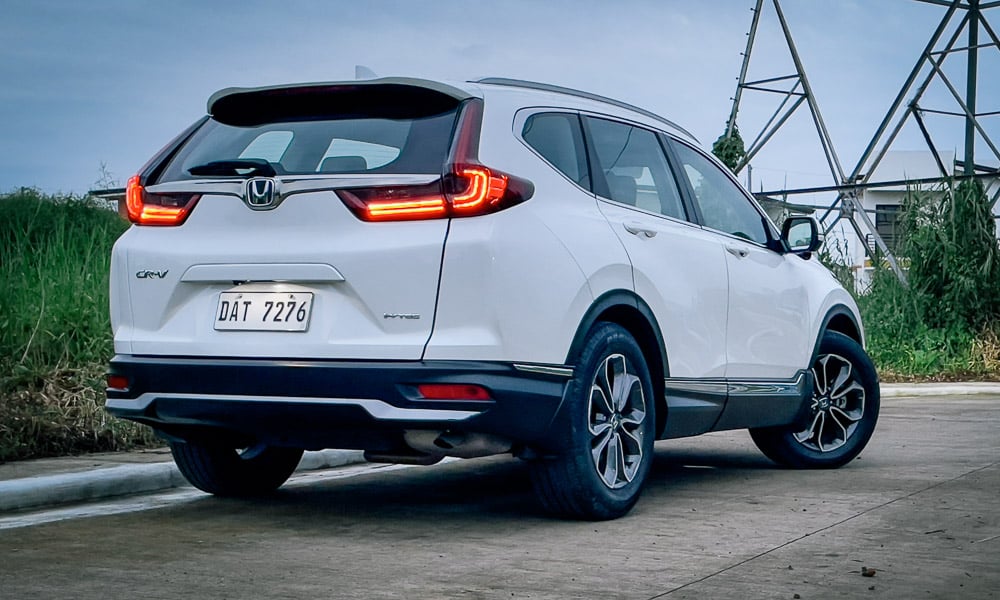

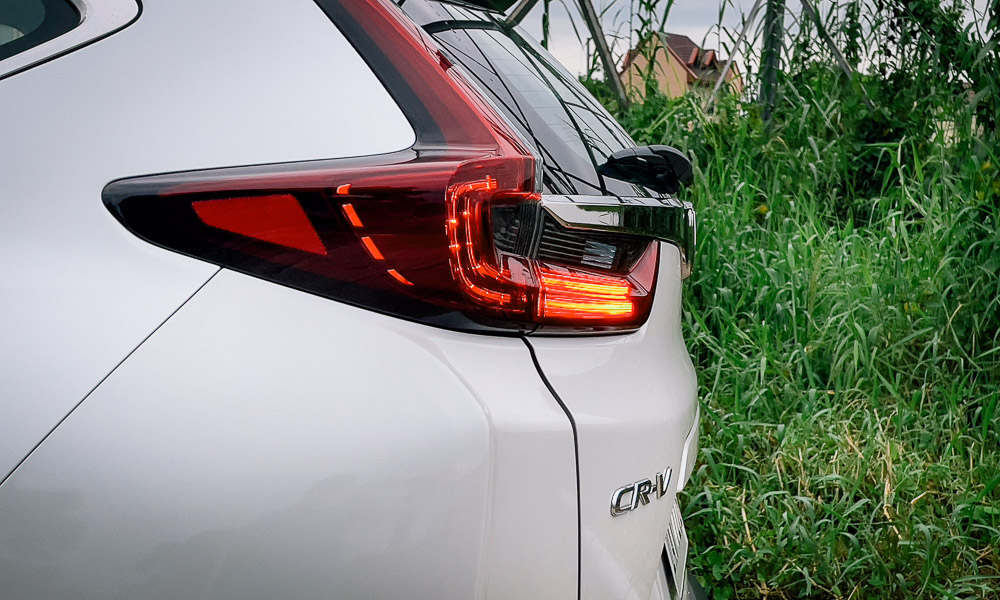
But it wasn’t made to seat 10 from the get-go. And so, the third and fourth generations reverted to a five-seat configuration. But when the fifth-generation CR-V came out, it was specifically designed to seat seven people. And for the first time in the Philippines, Honda offered a car with a diesel engine. And sure enough, this latest model has been a sales hit, bringing back the CR-V to relevance.
While most people got their hands on the diesel seven-seater CR-Vs, there’s one variant that stayed true to its roots. The 2.0 S CVT, which we had the chance of driving daily for a week. Given the many benefits that the seven-seat diesel variants have, does this gasoline-fed five-seater still make sense?

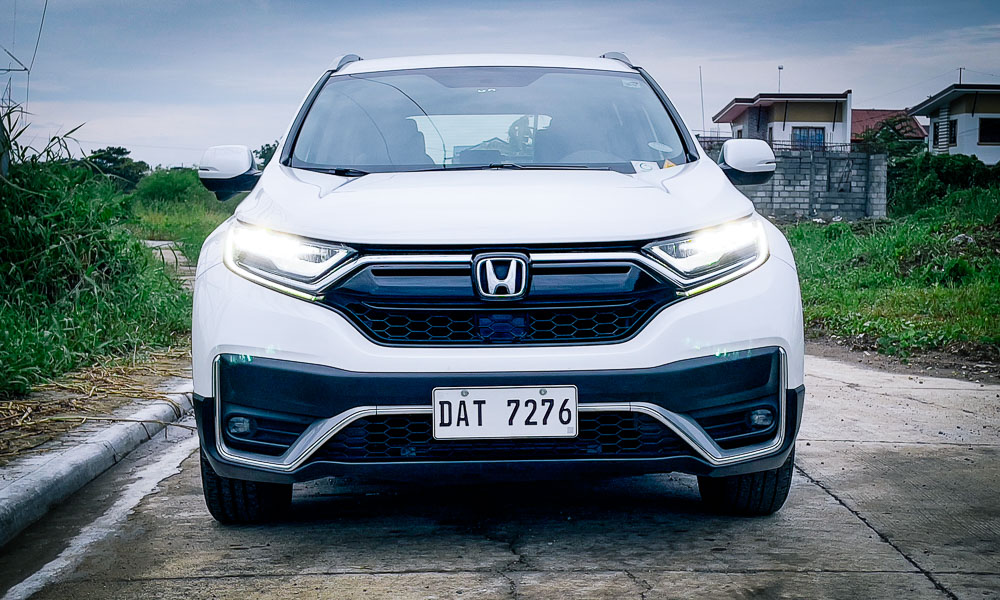

Let’s start with the looks. The base-model CR-V has the most bits and pieces that the more expensive variants have. That means the front and rear end, the sides, and even the 18-inch rims and 235/60 tires are shared.
But if you’re eagle-eyed, missing are the shark-fin-type antenna and the panoramic sunroof that only the top diesel variant has. Also, the base gasoline-fed CR-V sits 10mm lower than the all-wheel-drive version.


Inside is where more changes can be found. This gasoline variant is the only one with a traditional lever-type gear selector in place of the buttons found on the diesel.


While the infotainment system is the same as the higher-end models, this variant makes do with four speakers. Even though it lost four tweeters, the Android Auto- and Apple CarPlay-capable system is decent and sounds quite good.


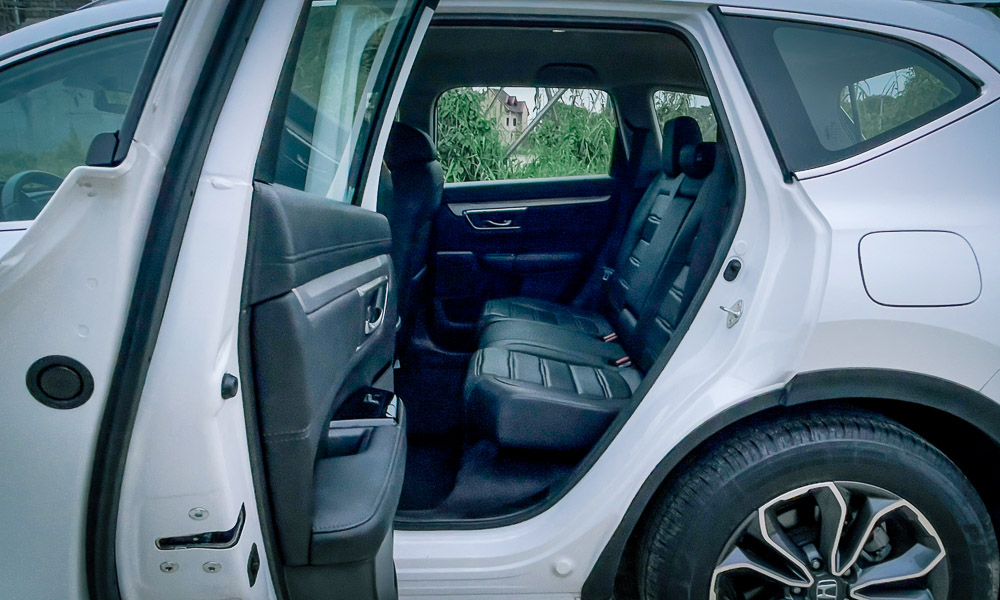
The most noticeable omissions are the third-row seats and the climate vents, and the earlier-mentioned panoramic sunroof. At the back, you’ll find a tonneau cover to keep your valuables hidden from the sight of thieves. But the biggest difference is what’s found under the hood.
Pop that bonnet up and you’ll see a 2.0-liter four-cylinder i-VTEC engine, a motor that usually does duty in a CR-V. The engine may make 152hp, which is 34hp more than the diesel models. However, it only makes 189Nm of torque, a whopping 111Nm less than the diesel. The petrol motor transfers power to the front wheels via a CVT.

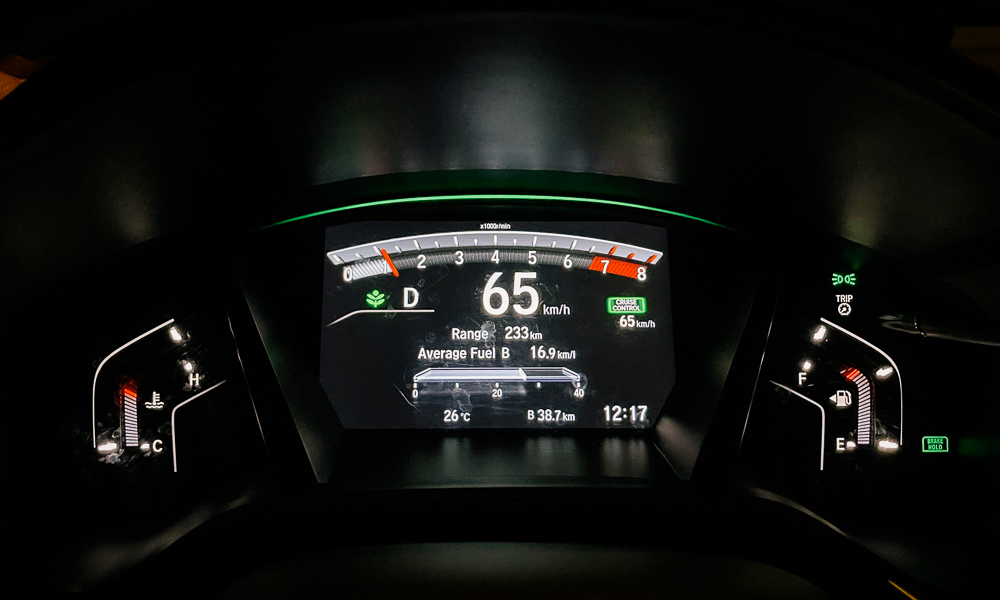
But before you whine about the rubber-band feel of this transmission, Honda tunes its CVTs rather well. Since the CVT keeps the engine at its optimum speed, it’s easy to set the bulky bodywork in motion. In the city, acceleration from rest is buttery-smooth. To sweeten that even further, getting 10km/L should be easy.
And when you hit the open road, this is where the CVT truly shines. Though it may not be confidence-inspiring when you need to make sudden overtakes, the fuel economy of this thing rivals that of its diesel counterparts.
At one time, I got 17km/L on the trip computer, comparable to those of most oil-burning SUVs. And given the price disparity of these two fuel types, the difference is negligible. You might end up saving more on fuel by loading it with the most affordable 91-octane gasoline.
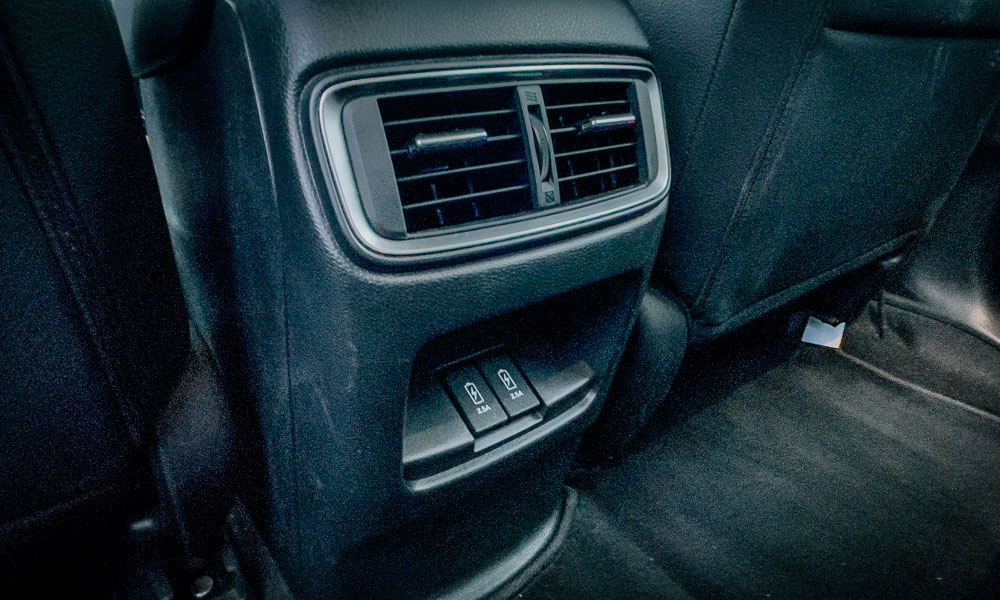
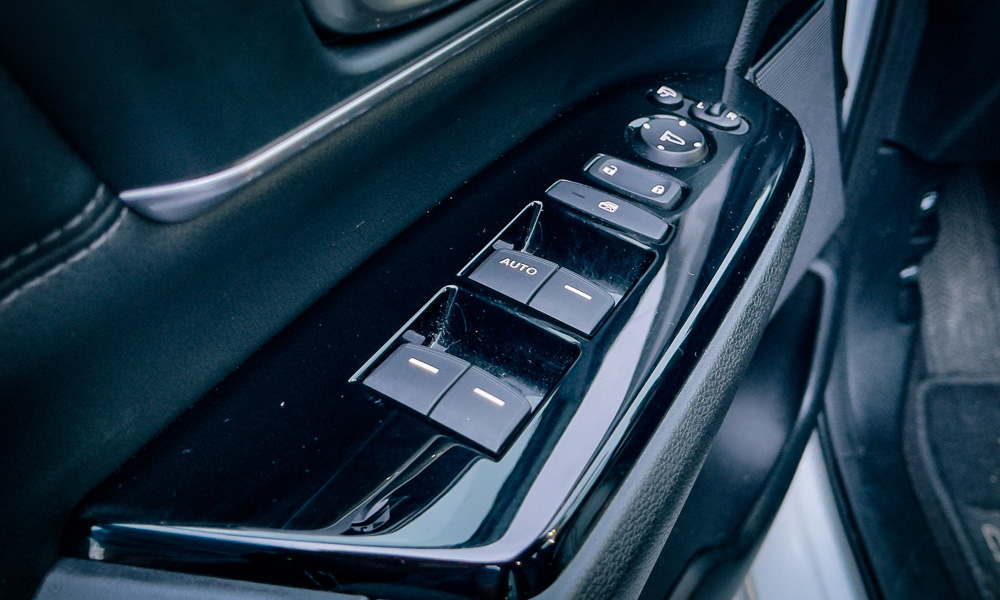
The fit and finish of the interior are good, as expected from Hondas. The seats are comfortable, and even though they are manually adjusted, it’s easy to get to the desired driving position. Plus, there are fewer electrical parts to worry about. The ride is good, but I just have a problem with the NVH levels. The engine noise is rather muted. However, tire noise starts to creep in at as low as 40km/h, and wind gusts can be heard inside the cabin at around 80km/h.
While this may be the base variant, a similarly specced Mazda CX-5 feels much more refined. But to the CR-V’s credit, the interior is rather practical. There are generous amounts of headroom, shoulder room, and legroom inside to make all occupants comfortable throughout the trip. Plus, it has a huge cargo area that can gobble up much of your stuff. And it only gets better once you remove the tonneau cover and fold down the second-row seats.
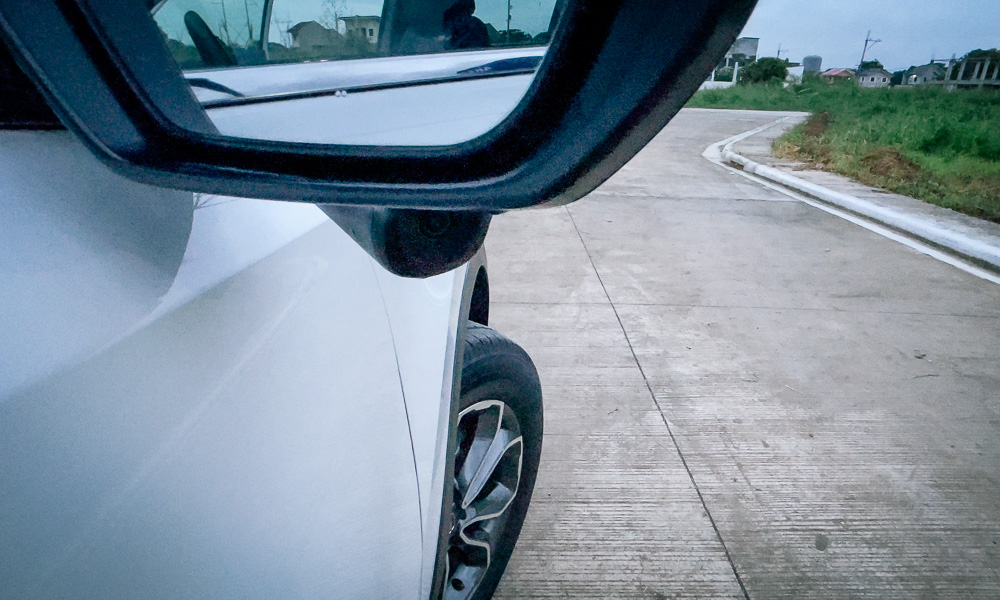
The base-variant CR-V isn’t perfect. But it’s a comfortable, practical, and fuel-efficient crossover that’s perfect for city-dwelling small families who’d love occasional weekend road trips, too.
At P1,738,000, this is one of the most affordable of the bunch, thus making it a good candidate if you’re looking for a compact crossover.
While the seven-seater variants are more popular with buyers, there’s no denying that the base CR-V also has its own clientele—people who don’t want to bother with the additional maintenance needs of a diesel. And with specs that are closer to the OG CR-V, it is a great way for Honda to pay homage to the iconic model. Keeping up with the demands of today, while finding a way to stay true to its roots.
Honda CR-V 2.0 S CVT
| Engine | 2.0-liter four-cylinder gasoline |
| Transmission | CVT |
| Power | 152hp @ 6,500rpm |
| Torque | 189Nm @ 4,300rpm |
| Dimensions | 4,623mm x 1,855mm x 1,658mm |
| Drive layout | FWD |
| Seating | 5 |
| Price | P1,738,000 |
| Upside | Comfortable and quite practical. Good fuel efficiency for a gasoline-fed crossover. |
| Downside | A little more refinement wouldn’t hurt. |


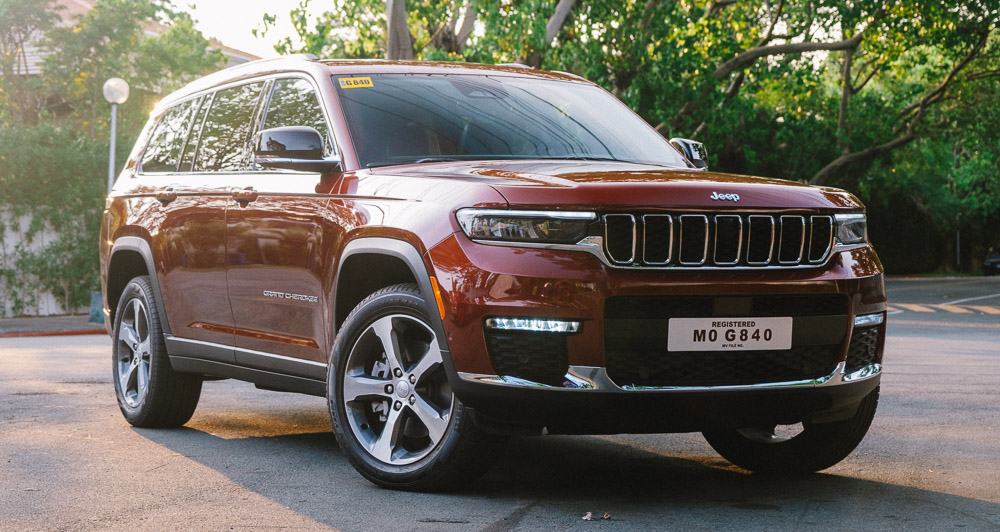

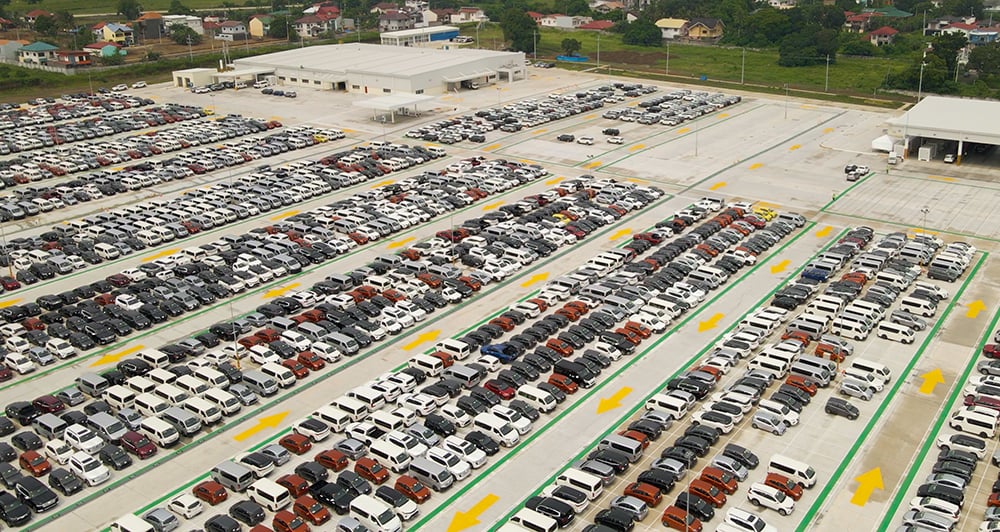


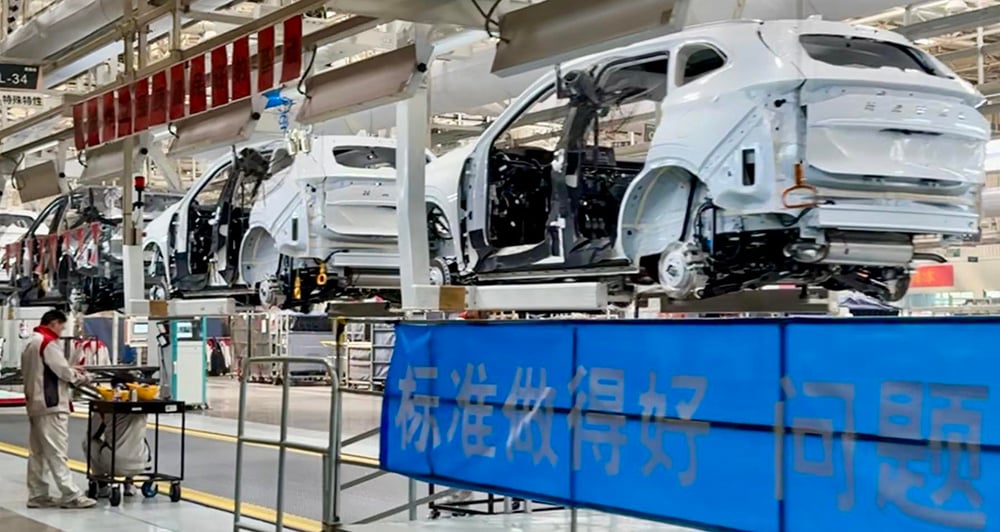


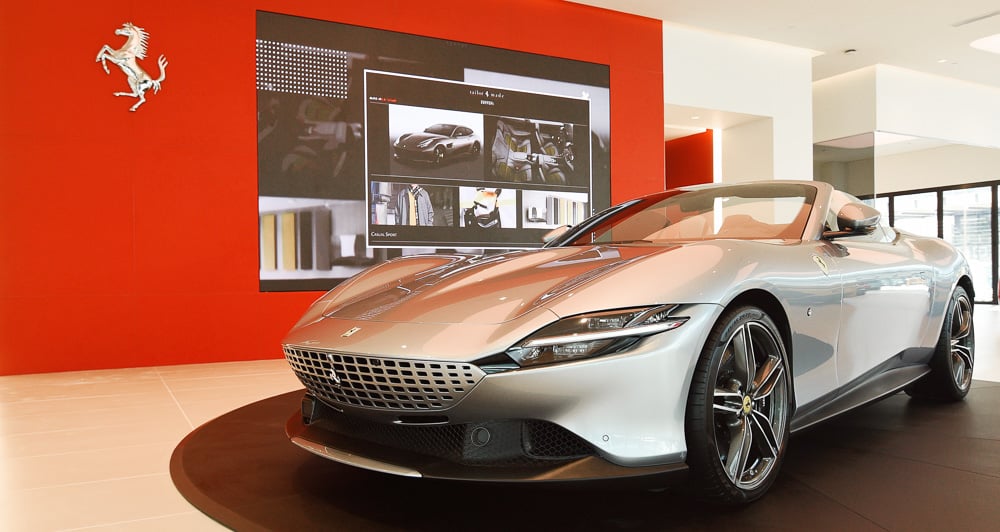
Comments